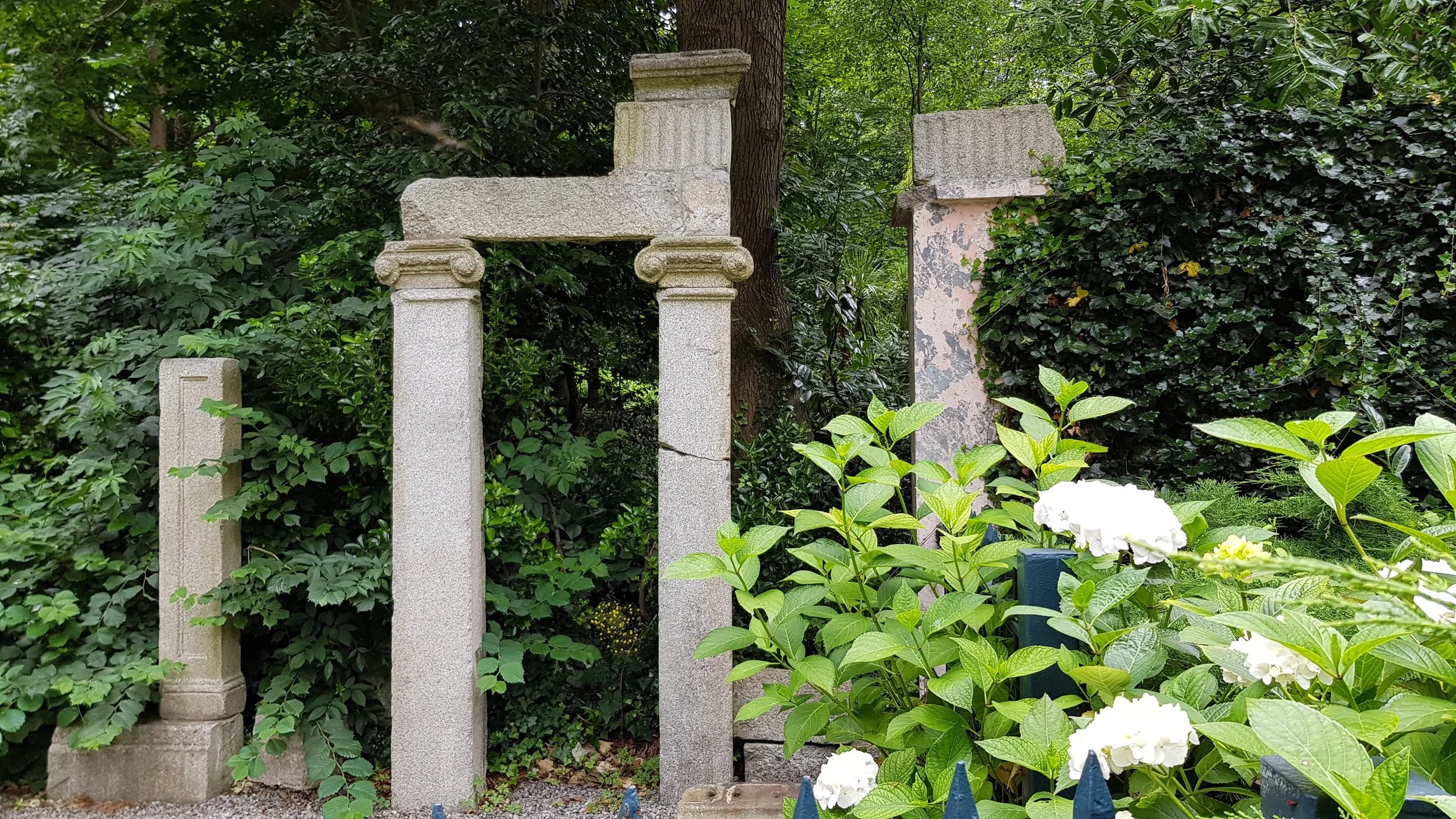Corke Lodge GardeN
OPEN DATES 2024
June 3rd to 28th • Monday to Friday
July 2nd to 27th • Tuesday to Saturday
August 5th to 25th • Monday to Sunday
Between the hours of 10 A.M. and 2 P.M.
Voluntary contribution of €8 per person in favour of Our Lady’s Hospice
Corke Lodge garden is also open by appointment
Phone Number / WhatsApp: +353872447006
Email Address: cochranealfred7@gmail.com
ABOUT CORKE LODGE
The house was built on and incorporates the remains of an older structure, visible on the 1750 maps of Dublin. Situated on the lands owned by Hannagh Tilson Magan it was commissioned by her or by her son William Henry Magan between 1815 and 1820.
William Magan is known to have employed the Architect William Farrell to design a country house, Clonearl, in Co. Offaly in 1815. This house was destroyed by fire in the 1840's but it is clear from the surviving plans that the distinctive pillastered design is mirrored in both Killyon manor, co. Meath another Magan/Loftus house and in Corke Lodge. Unusual fenestration and similar door treatments also link the two surviving properties. Close by the church at Crinken, endowed by Hannagh Magan was also designed by Farrell. So it would not be unreasonable to assume that Corke Lodge, which has all the hallmarks of an architectural 'capriccio' is by the same hand. The main façade and the two front reception rooms are in the classical style. The rooms at the back and above have gothic detailing.
The last Magan owner of this property as well as the other huge Magan/Tilson/Loftus estates was Augusta. Her eccentricities and reclusive life are said to have inspired Charles Dickens, who visited Dublin, in his creation of Miss Haversham, in the Great Expectations.
The most striking feature of the house is the bold architectural treatment of the classical facade, a miniature of the two great houses mentioned above. By contrast, the back elevations are in a flat gothic stile reflecting the romantic nature of the planted 'wilderness'. The interiors retain all their original features in terms of marble mantle pieces, pillared architraves and plasterwork. Although the house originally would not have been used for more than a few days a year by the Magans when bathing in the nearby sea or visiting the family tombs at Crinken, it has been continuously inhabited since its incorporation into the Woodbrook estate by Sir Stanley Cochrane in 1906. Sir Stanley, heir to a mineral water fortune, was an accomplished athlete and opera singer who created on his estate championship cricket pitches a golf course and the Laurel Park Opera House, precursor of Glyndebourne, and where Dame Nellie Melba sang.
The house as it presents itself today was restored and furnished in 1980 by architect Alfred Cochrane. It pioneered the current trends in historicist restoration of country houses and was featured in a number of local and international publications.
"There is more fun at Corke Lodge..."
writes Jane Powers, The Irish Times
"where the 'ancient garden' of box parterres is punctuated by melancholy gothic follies, and emerges eerily from the dense boskage of evergreen oaks, myrtles, and a writhing cork oak tree with deeply corrugated bark. Avenues of cordyline palms and tree ferns, dense planting of sword-leaved New Zealand flax, and clumps of whispering bamboos lend a magical atmosphere to this rampantly imaginative creation."
The garden was featured in Diarmuid Gavin's Gardens of Ireland on RTE on Jan 5th. 2001. Since 1999 it is part of the Dublin Garden Trail, www.dublingardens.com, and is open year round to group visits by appointment.
Phone Number / WhatsApp: +353872447006
Email Address: cochranealfred7@gmail.com




























































































